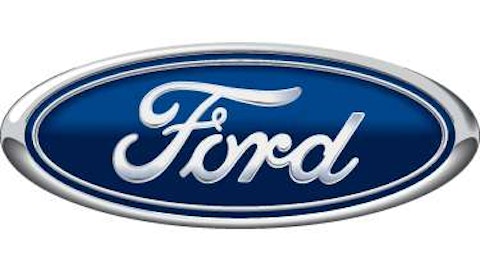Not all profits are created equally.
Investors need to look beneath the headline profit number and inspect the quality of earnings to ensure results aren’t driven by accounting gimmickry.
That definitely applies to Tesla Motors Inc (NASDAQ:TSLA)‘s $11.3 million first quarter profit figure. After digging into the company’s SEC filing, here are four problems I found in the report.
One red flag in Tesla’s report was that a large portion of revenue came from the sale of Zero Emission Vehicle, or ZEV, credits.
These credits are the byproduct of laws passed by California and several other states which require automakers to earn 15% of revenues from the sale of zero emission vehicles as early as 2025. Companies can avoid these rules by buying credits from other automakers, like Tesla Motors Inc (NASDAQ:TSLA), that are exceeding their targets.
How important are emission credits to Tesla? ZEV credits accounted for $68 million or 12% of the company’s revenues.
The problem is that the value of ZEV credits is expected to decline considerably this year. Nissan is expecting to begin selling credits earned over the past two years from its all-electric Leaf, the top-selling battery-powered vehicle in the United States.
Without these emission credits, Tesla Motors Inc (NASDAQ:TSLA)’s paper profit quickly turns into a loss.
Warranty liability
An notable development in the automotive industry is rapid decline in warranty costs.
Warranty accrual is the amount companies set aside for expected warranty expenses. In 2012, established automakers like General Motors Company (NYSE:GM) and Ford Motor Company (NYSE:F) set aside 2.3% and 1.4% of revenues to cover future warranty expenses respectively. These are the lowest levels in a decade.
Three reasons for this decline.
1) Growing sales for lower-priced and smaller vehicles with shorter warranties in Asia. Asia now accounts for 7.8% and 6% of GM’s and Ford’s revenue respectively.
2) Higher quality, reliable vehicles are reducing the need for future warranty work. New models don’t break down as often and the repairs are less costly.
3) Better data allows manufacturers to discover and advert problems long before the need for a recall.
Multiply a 1% accrual rate over the $150 billion and $134 billion GM and Ford Motor Company (NYSE:F) grossed respectively last year, and that adds up to substantial savings.

So how much should Tesla set aside for future warranty claims?
That’s hard to estimate. The problem with Tesla’s new technology is that we really don’t know how much is needed to cover future expenses. So Tesla is using GM and Ford Motor Company (NYSE:F) as a benchmark.
Is that appropriate?
The difference is Ford and General Motors Company (NYSE:GM) are selling well-established platforms. Tesla Motors Inc (NASDAQ:TSLA)’s technology is relatively unproven.
In the interest of conservatism, the company should probably be using a larger accrual figure. Tesla has limited room to absorb warranty costs which could result in unexpected losses in the future.
One time gains
Much of Tesla’s profit can be contribution to one-off accounting gains from the acceleration of Tesla’s Department of Energy loan.
When Tesla Motors Inc (NASDAQ:TSLA) amended the terms of its loan in March, the acceleration of its payment schedule reduced the estimated value of the DOE’s warrant resulting in a non-cash $11 million gain.
Without this one time change, there would be no first quarter GAAP profit.
Unsustainable sales
Much of Tesla’s sales during the past two quarters were due to pent-up demand.
It’s important to note that Tesla only recognizes revenue after the vehicle has been delivered. Tesla has been taking deposits from customers for years which accounts for much of the sales pop.
It’s still unclear if these sales are sustainable.

A final concern is the company’s lease program.
In April, Tesla announced that it would guarantee the residual value of leased vehicles. That can create a problem because the future residual value for new vehicles is completely unpredictable.
Do you know what a Model S will be worth in two or three years?
If Tesla Motors Inc (NASDAQ:TSLA) is guaranteeing a high residual value to make its cars more affordable, it could be stuck with a lot of vehicles that are worth less than expected.
This should cause migraines for investors because it exaggerates short-term unit sales and could result in unexpected losses.
Foolish bottom line
So should investors be worried about Tesla based on these problems? Probably not.
These types of red flags have been spotted in other fast growing names like Netflix, Inc. (NASDAQ:NFLX) and salesforce.com, inc. (NYSE:CRM) and the bears were run over after raising similar issues. At this stage in the growth cycle, investors want to see accelerating sales growth and that’s what Tesla offers.
But at some point earnings quality will become important. If these issues aren’t resolved they could become a problem down the road.
Robert Baillieul has no position in any stocks mentioned. The Motley Fool recommends Ford Motor Company (NYSE:F), General Motors Company (NYSE:GM), and Tesla Motors (NASDAQ:TSLA) . The Motley Fool owns shares of Ford and Tesla Motors.
The article Warning: 4 Red Flags in Tesla’s Results originally appeared on Fool.com.
Robert is a member of The Motley Fool Blog Network — entries represent the personal opinion of the blogger and are not formally edited.
Copyright © 1995 – 2013 The Motley Fool, LLC. All rights reserved. The Motley Fool has a disclosure policy.



